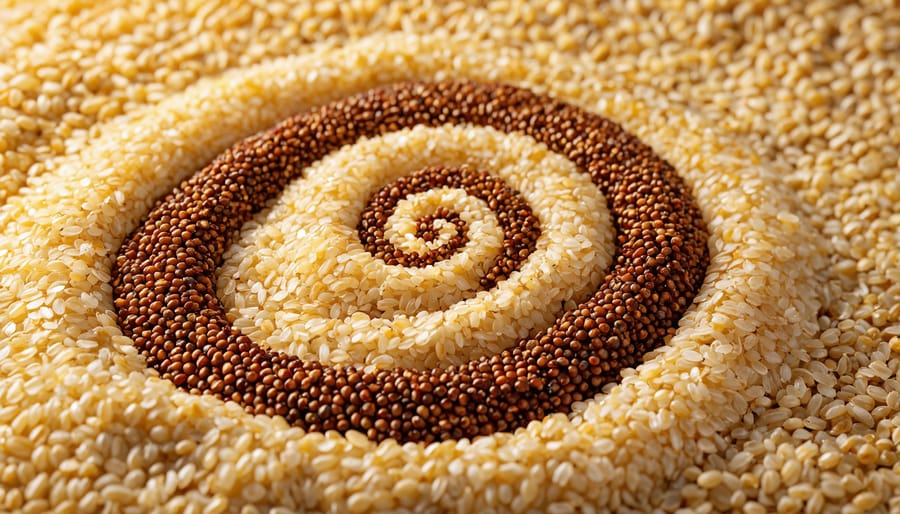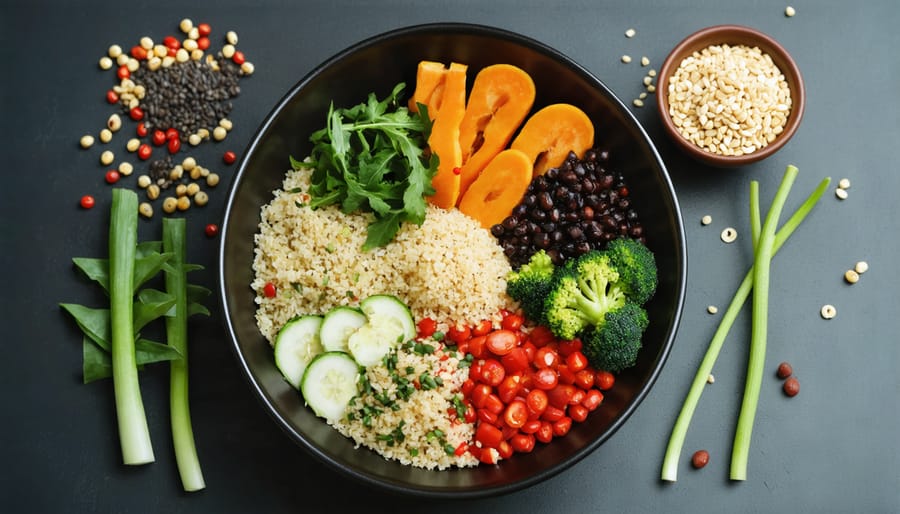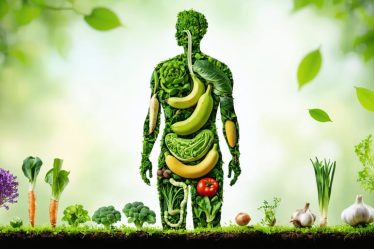
Discover why quinoa stands as a protein powerhouse in modern plant-based eating. Unlike most plant proteins, quinoa delivers all nine essential amino acids your body needs but can’t produce on its own. This ancient grain’s complete protein profile rivals that of meat, making it a game-changer for anyone looking to boost their protein intake naturally. Think of essential amino acids as building blocks – your body uses them to create everything from immune cells to muscle tissue. While many grains lack lysine, quinoa breaks the mold by providing this crucial amino acid alongside histidine, leucine, and others in perfect proportions. Whether you’re an athlete, busy professional, or health-conscious parent, understanding quinoa’s amino acid profile opens up exciting possibilities for nourishing your body while enjoying delicious, versatile meals.
The Essential Amino Acid Challenge in Plant-Based Diets
Why Your Body Needs All Nine Essential Amino Acids
Think of essential amino acids as your body’s building blocks – they’re crucial nutrients that your body can’t make on its own. Just like you need all pieces of a puzzle to complete the picture, your body needs all nine essential amino acids to function at its best. These mighty molecules work together to support everything from muscle repair and immune function to hormone production and mood regulation.
When you’re not getting enough of even one essential amino acid, it’s like missing a key ingredient in your favorite recipe – things just don’t work quite right. Your body uses these amino acids to build proteins, maintain tissue health, and keep your energy levels steady throughout the day. What’s particularly interesting is that your body needs to get these nutrients daily, since it doesn’t store extra amino acids for later use.
That’s why eating complete protein sources like quinoa is so important for maintaining optimal health and supporting your active lifestyle.

Common Protein Gaps in Plant-Based Eating
When transitioning to a plant-based diet, many people worry about getting enough protein, and with good reason. Common plant proteins often lack one or more essential amino acids, creating what nutritionists call “protein gaps.” Legumes, for instance, tend to be low in methionine, while grains typically lack lysine. These gaps are what make meal planning a bit trickier for vegetarians and vegans.
I remember when I first went plant-based, keeping track of amino acids felt overwhelming! But here’s the good news: you don’t need to get all your amino acids from a single food source. The key is variety and smart food combining. Rice and beans are a classic example of complementary proteins that, together, provide all essential amino acids.
This is exactly why quinoa has become such a superstar in the plant-based world – it eliminates the guesswork by providing all nine essential amino acids in one convenient package. No combining required!
Quinoa’s Complete Amino Acid Profile

Breaking Down Quinoa’s Protein Content
Let’s break down quinoa’s protein content by the numbers – it’s pretty impressive! In just one cup of cooked quinoa (about 185g), you’ll find roughly 8 grams of protein, but what makes it truly special is its amino acid composition.
Unlike many other plant foods, quinoa contains all nine essential amino acids in significant amounts. For example, lysine, which is often lacking in other grains, is found in abundance in quinoa – about 442mg per cup. It’s also rich in methionine and cysteine, providing approximately 191mg combined per serving.
What I love about quinoa’s protein profile is how well-balanced it is. Here’s a quick snapshot of what you’re getting in each cup:
– Histidine: 167mg
– Isoleucine: 251mg
– Leucine: 429mg
– Valine: 305mg
– Phenylalanine: 278mg
– Threonine: 248mg
– Tryptophan: 67mg
These numbers might seem a bit technical, but what they really mean is that quinoa can help you meet your daily protein needs more effectively than many other plant-based foods. It’s particularly valuable if you’re following a vegetarian or vegan diet, as finding complete protein sources can sometimes be challenging.
How Quinoa Compares to Other Plant Proteins
When it comes to plant-based proteins, quinoa truly stands out among its peers as one of nature’s nutritional powerhouses. While many plant proteins lack one or more essential amino acids, quinoa delivers a complete package. For comparison, rice is low in lysine, while beans are typically short on methionine. Lentils, though protein-rich, don’t quite match quinoa’s balanced amino acid profile.
Let’s look at the numbers: per cup of cooked grain, quinoa provides about 8 grams of complete protein, compared to brown rice’s 5 grams of incomplete protein. Even popular alternatives like buckwheat and amaranth, while nutritious, don’t quite match quinoa’s amino acid balance.
I love sharing with my community that quinoa isn’t just about the protein content – it’s about quality. Think of it as nature’s multivitamin in grain form! While other plant proteins might need careful combining to create complete proteins, quinoa simplifies the process by offering everything in one delicious package. This makes it especially valuable for those following plant-based diets or anyone looking to diversify their protein sources.
Making Quinoa Work in Your Daily Meals
Quick and Tasty Quinoa Preparation Tips
Getting your quinoa just right is easier than you might think! I remember when I first started incorporating this protein-packed grain into my healthy meal preparation, and now it’s become second nature. Start by rinsing your quinoa thoroughly under cold water – this removes the natural coating called saponin, which can make it taste bitter.
For perfect fluffy quinoa, use a 2:1 ratio of liquid to quinoa. I like using vegetable broth instead of water for extra flavor, but either works beautifully. Bring your liquid to a boil, add the quinoa, reduce heat to low, cover, and simmer for about 15-20 minutes until the liquid is absorbed and those cute little spiral germs appear.
Want to make it even more delicious? Try these quick flavor boosters:
– Sauté minced garlic and onions before adding quinoa
– Stir in fresh herbs like cilantro or basil after cooking
– Add a squeeze of lemon juice and a drizzle of olive oil
– Mix in roasted vegetables
– Season with your favorite spices (cumin and paprika work wonderfully!)
For meal prep enthusiasts, cooked quinoa stays fresh in the refrigerator for up to five days, making it perfect for quick, nutritious meals throughout the week. You can even freeze portions for up to two months!
Simple Meal Ideas for Protein-Rich Combinations
Let me share some of my favorite ways to create delicious, protein-packed meals with quinoa that are both satisfying and super easy to prepare. The key is pairing quinoa with complementary ingredients to create nutritionally complete meals that taste amazing!
For a quick lunch, try a Mediterranean-inspired quinoa bowl with chickpeas, cherry tomatoes, cucumber, and a sprinkle of feta cheese. The combination of quinoa and chickpeas creates a protein powerhouse, while the fresh vegetables add vibrant flavors and essential nutrients.
One of my go-to dinner options is a Mexican-style quinoa skillet. Simply combine cooked quinoa with black beans, corn, bell peppers, and your favorite Mexican seasonings. Top it with avocado and a squeeze of lime for a complete meal that’s ready in under 30 minutes.
For breakfast lovers, whip up a protein-rich quinoa breakfast bowl. Cook your quinoa in almond milk, add a scoop of protein-rich Greek yogurt, and top with nuts, seeds, and fresh berries. It’s like a warm hug in a bowl that keeps you energized all morning!
Here are some more quick combination ideas:
– Quinoa + lentils + roasted vegetables
– Asian-inspired quinoa stir-fry with edamame and tofu
– Quinoa tabbouleh with plenty of fresh herbs and chickpeas
– Warm quinoa salad with roasted sweet potato and black beans
Remember to batch cook quinoa at the beginning of the week to make meal prep easier. Store it in an airtight container in the fridge, and you’ll always have a protein-rich base ready for quick, nutritious meals.
These combinations not only ensure you’re getting all your essential amino acids but also create satisfying meals that are perfect for busy weekdays. Feel free to experiment with different seasonings and ingredients to find your favorite combinations!

As we’ve discovered, quinoa truly stands out as a nutritional powerhouse, offering all nine essential amino acids our bodies need. This ancient grain isn’t just another trendy superfood – it’s a practical solution for anyone looking to boost their protein intake, especially those following a plant-based lifestyle. What I love most about quinoa is its incredible versatility; whether you’re tossing it into your morning breakfast bowl, adding it to fresh salads, or serving it as a hearty side dish, there are countless delicious ways to incorporate this complete protein into your daily meals.
Remember, meeting your essential amino acid needs doesn’t have to be complicated. By making quinoa a regular part of your diet, you’re not only nourishing your body with high-quality protein but also enjoying the benefits of fiber, minerals, and antioxidants. Start small by swapping rice or pasta with quinoa once or twice a week, and gradually build from there. Your body will thank you for choosing this nutrient-rich ancient grain that truly delivers on both health benefits and flavor. Why not pick up some quinoa on your next grocery run and explore the wonderful possibilities it brings to your kitchen?



